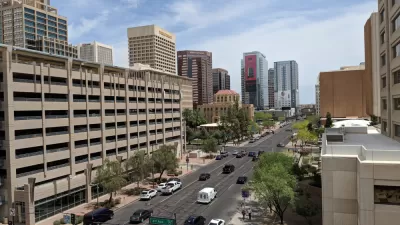PlaceMatters has partnered with the National Charrette Institute on a number of occasions, providing trainings and giving panel presentations at conferences. One of our common themes is "High Touch, High Tech Charrettes." During the sessions we talk about the advantages of low tech and when it makes sense to bring in high tech. Below I have embedded a video that is a montage of clips filmed during a downtown revitalization Charrette in Wichita Kansas. In this project, PlaceMatters partnered with Goody Clancy to help residents go through a series of exercises including keypad polling and mapping exercises to brainstorm about the future of downtown Wichita.
PlaceMatters has partnered with the National Charrette Institute on a number of occasions, providing trainings and giving panel presentations at conferences. One of our common themes is "High Touch, High Tech Charrettes." During the sessions we talk about the advantages of low tech and when it makes sense to bring in high tech.
Below I have embedded a video that is a montage of clips filmed during a downtown revitalization Charrette in Wichita Kansas. In this project, PlaceMatters partnered with Goody Clancy to help residents go through a series of exercises including keypad polling and mapping exercises to brainstorm about the future of downtown Wichita.
It's a short, non-narrated video that gives you a sampling of the conversations that took place. This video is a tribute to going low tech.
Low Tech Mapping Exercise - Downtown Revitalization on Vimeo.
Everyone's familiarity with pen, paper, strings, and glue means people of all ages and backgrounds are comfortable jumping into the exercise.
So why would you bring technology into a process like this at all? It is important to think about technology from the perspective of what can we accomplish with the simplest of materials and then think about what's missing (a.k.a. the appropriate technology approach to planning). Often the answer is "not much" and therefore you should keep it simple and keep it low tech. Box City is a favorite of ours if you want go low tech/high touch.
So what's the holy grail of high touch-high tech decision making? Here are some quick thoughts:
- During the creative process, technology would be nearly invisible. As much as possible, technology would not take away from the tactile, intuitive aspects of a group mapping exercise like the one shown above but would enhance the outcomes. ULI's Reality Check [add link] is another example where Lego blocks representing jobs and housing are placed on a map to think about where and how to grow smart. Tallying the Lego blocks and then entering them into GIS analysis then makes it possible to report back to participants how different strategies positively and negatively affected important indicators of livability, economic viability, and sustainability.
- The technology would provide useful information at the right time and at the right level to inform and inspire participants and help them move towards consensus on issues and idea. My posting on Gaggle Googling is one example of where technology helped improve the discussion making process in a group setting.
- The technology helps people experiment with different approaches and get quick feedback on choices. Feedback includes being able to hear from others on whether or not an idea resonates with others (e.g. using keypad polling to see which strategies have the most support) as well as impact analysis tools that can quantify and display the impacts of choices (e.g. the cost of infrastructure added).
this blog was cross posted on PlaceMatters.

Alabama: Trump Terminates Settlements for Black Communities Harmed By Raw Sewage
Trump deemed the landmark civil rights agreement “illegal DEI and environmental justice policy.”

Study: Maui’s Plan to Convert Vacation Rentals to Long-Term Housing Could Cause Nearly $1 Billion Economic Loss
The plan would reduce visitor accommodation by 25% resulting in 1,900 jobs lost.

Planetizen Federal Action Tracker
A weekly monitor of how Trump’s orders and actions are impacting planners and planning in America.

Waymo Gets Permission to Map SF’s Market Street
If allowed to operate on the traffic-restricted street, Waymo’s autonomous taxis would have a leg up over ride-hailing competitors — and counter the city’s efforts to grow bike and pedestrian on the thoroughfare.

Parklet Symposium Highlights the Success of Shared Spaces
Parklets got a boost during the Covid-19 pandemic, when the concept was translated to outdoor dining programs that offered restaurants a lifeline during the shutdown.

Federal Homelessness Agency Places Entire Staff on Leave
The U.S. Interagency Council on Homelessness is the only federal agency dedicated to preventing and ending homelessness.
Urban Design for Planners 1: Software Tools
This six-course series explores essential urban design concepts using open source software and equips planners with the tools they need to participate fully in the urban design process.
Planning for Universal Design
Learn the tools for implementing Universal Design in planning regulations.
Caltrans
Smith Gee Studio
Institute for Housing and Urban Development Studies (IHS)
City of Grandview
Harvard GSD Executive Education
Toledo-Lucas County Plan Commissions
Salt Lake City
NYU Wagner Graduate School of Public Service






























